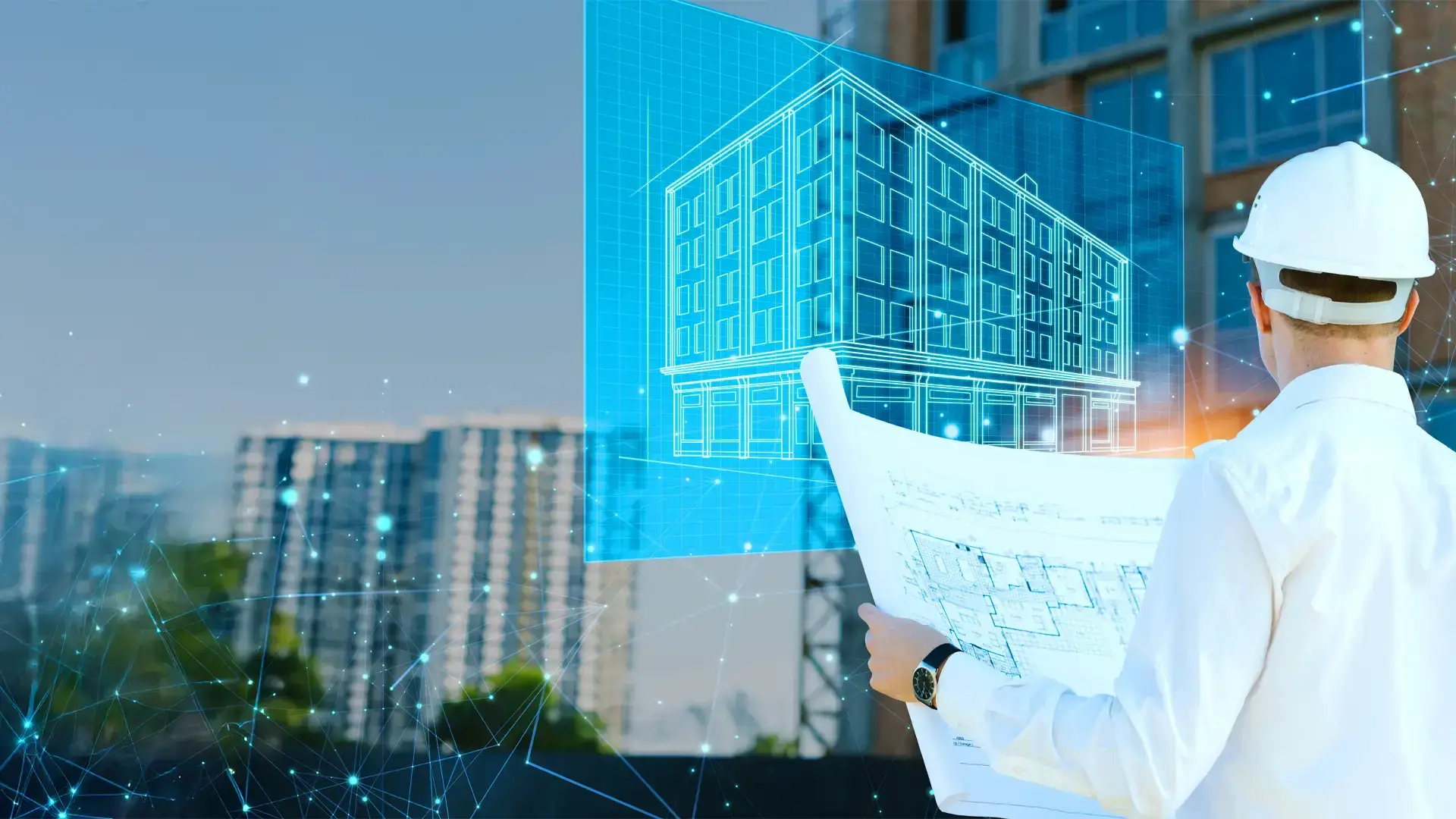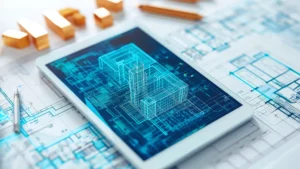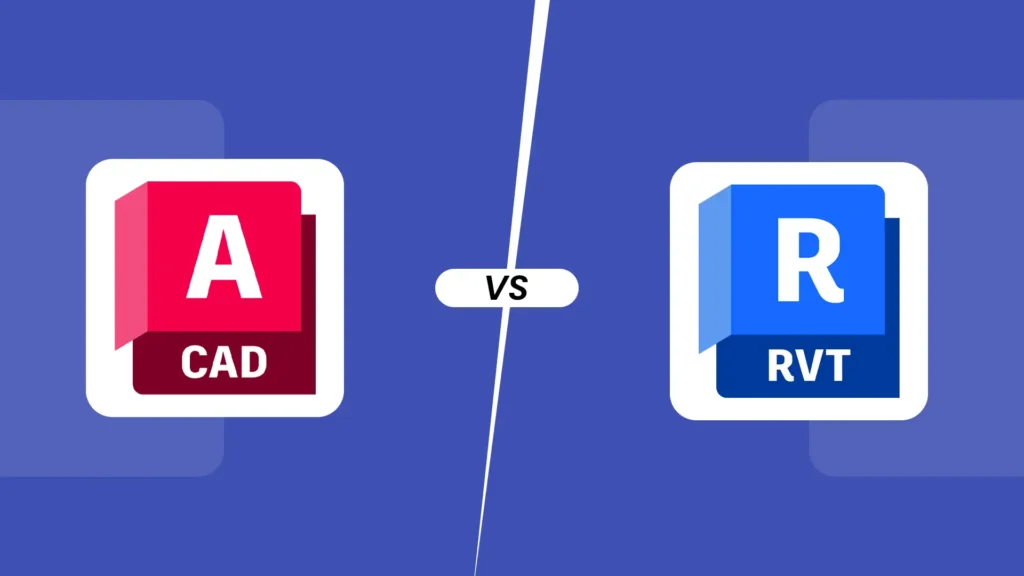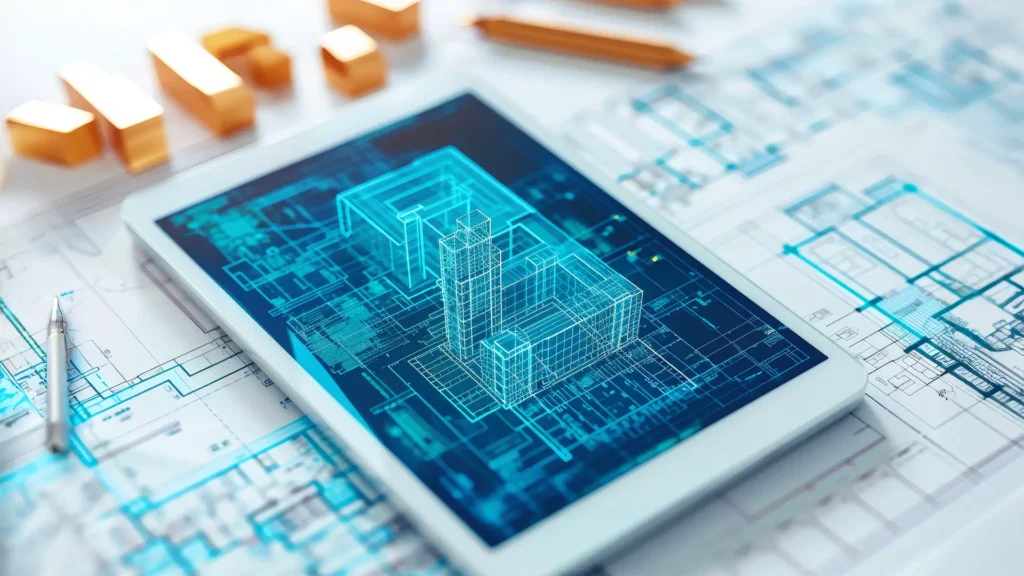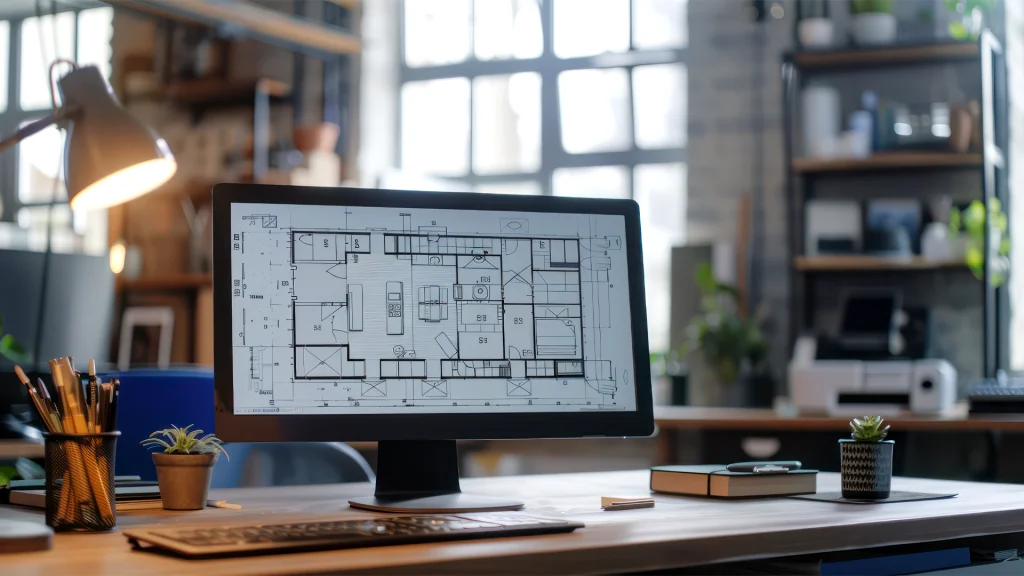The Transformative Benefits of Building Information Modeling (BIM) in Construction
Imagine a world where construction projects run seamlessly – where delays, budget overruns & miscommunication become things of the past. That’s precisely what Building Information Modeling (BIM) brings to the construction industry. BIM is revolutionizing the way architects, engineers & contractors collaborate, offering a smarter, more efficient & sustainable approach to building. In this blog, we’ll explore the benefits of BIM and why it’s an essential tool for modern construction.
What is BIM?
Building Information Modeling (BIM) is a digital representation of the physical and functional characteristics of a facility. It serves as a shared knowledge resource, providing all stakeholders with essential insights throughout a project’s lifecycle – from initial design to demolition. Unlike traditional 2D drawings, BIM Modeling offers a comprehensive 3D model enriched with detailed information about building components, systems & materials. This holistic approach ensures that architects, engineers, contractors & owners operate from a unified platform, facilitating informed decision-making and streamlined project execution.
Key Features of BIM –
- 3D Visualization – Enables a realistic view of the final project before construction begins.
- Data Integration – Stores crucial details, including materials, dimensions & building performance data.
- Collaboration Hub – Allows seamless communication between architects, engineers & contractors.
What are the benefits of BIM?
1. Enhanced Collaboration and Coordination
BIM fosters real-time collaboration by providing a centralized digital platform where all stakeholders – architects, engineers, contractors & owners – can access the most up-to-date project data. This unified approach minimizes communication errors, project delays, and workflow fragmentation.
With BIM –
- Teams work in sync using a shared platform, ensuring transparency and accuracy.
- Clash detection tools identify conflicts between structural, mechanical & electrical components before construction begins.
- Cloud-based solutions like Autodesk BIM 360 facilitate real-time updates and remote project access, improving team coordination.
2. Accurate Visualization and Planning
BIM enables professionals to create detailed 3D models, offering realistic visualizations of the final structure before construction starts. This capability improves decision-making, helps stakeholders approve designs efficiently & reduces costly design modifications during the build phase.
Key advantages include –
- BIM 3D modeling allows for a comprehensive visualization of the final project.
- Virtual walkthroughs help identify potential design issues before breaking ground.
- Construction scenarios can be simulated to optimize planning and mitigate risks early.
3. Improved Cost Estimation and Budget Management
Accurate cost estimation is crucial for successful project execution. BIM’s precise modeling capabilities facilitate real-time quantity take-offs, allowing for better budget allocation and minimizing unforeseen expenses.
BIM helps with –
- Real-time cost estimation – Automated calculations of material quantities reduce human errors.
- Value engineering – Identifies cost-saving opportunities through efficient design.
- Budget control – Early detection of errors prevents unnecessary expenditures and keeps projects within financial constraints.
4. Clash Detection and Risk Mitigation
One of BIM’s standout benefits is its ability to detect clashes between different building systems – structural, mechanical, electrical & plumbing – during the design phase. Identifying and resolving these issues before construction begins helps avoid costly rework and on-site disruptions.
BIM’s clash detection ensures –
- Prevention of rework – Early identification of conflicts between building components saves time and money.
- Improved safety planning – Simulated construction workflows enhance on-site safety.
- Legal risk reduction – Ensures compliance with design regulations, reducing disputes and project delays.
5. Enhanced Sustainability
Sustainability is a growing priority in construction & BIM supports green building initiatives by analyzing energy efficiency, material usage & environmental impact. These insights enable the optimization of designs to meet sustainability standards and reduce carbon footprints.
BIM contributes to –
- Energy-efficient designs – Analyzes energy consumption and daylight exposure for optimal performance.
- Eco-friendly material selection – Identifies sustainable materials and minimizes waste.
- Green certifications – Helps projects achieve LEED and other sustainability accreditations.
6. Streamlined Facility Management
BIM extends beyond construction by serving as a valuable tool for facility management and long-term building operations. Digital models provide detailed insights into building components and systems, making maintenance, renovations & asset management more efficient.
BIM benefits facility management by –
- Providing a digital twin – Centralized data on building systems aids in proactive maintenance.
- Simplifying renovations – Comprehensive records reduce the complexity of future modifications.
- Optimizing asset tracking – Enhances operational efficiency and lowers long-term costs.
What are BIM processes?
BIM processes encompass a series of steps that guide the creation, management, and utilization of digital building models throughout a project’s lifecycle. Key processes include –
- Model Creation – Developing a detailed 3D representation of the building, incorporating architectural, structural & MEP (mechanical, electrical, plumbing) elements.
- Information Management – Organizing and maintaining the data associated with the model to ensure accuracy and accessibility for all stakeholders.
- Collaboration – Facilitating seamless communication and data exchange among project teams to ensure alignment and integration of various disciplines.
- Analysis and Simulation – Utilizing the model to conduct performance analyses, such as structural integrity assessments and energy efficiency evaluations.
- Documentation – Generating construction documents, schedules & cost estimates directly from the model to support project execution and management.
These processes ensure that BIM serves as a dynamic and integral component of modern construction projects.
What is BIM used for?
BIM is employed across various stages of construction projects to enhance efficiency and accuracy. Its primary applications include –
- Design Visualization – Creating detailed 3D models that provide a realistic view of the proposed structure, aiding in design validation and stakeholder presentations.
- Construction Planning – Developing detailed construction sequences and schedules to optimize resource allocation and timelines.
- Cost Estimation – Providing precise material quantities and cost data to support budgeting and financial planning.
- Facility Management – Serving as a comprehensive repository of building information to assist in maintenance, operations & future renovations.
By integrating these functions, BIM enhances the overall quality and efficiency of construction projects.
Conclusion
The construction industry is embracing BIM (Building Information Modeling) as an essential tool for efficiency, sustainability & risk management. With its ability to enhance collaboration, improve cost estimation, streamline workflows & support sustainability, BIM is revolutionizing the way buildings are designed, constructed & managed. If you’re in the construction industry, adopting BIM is no longer an option – it’s a necessity!

